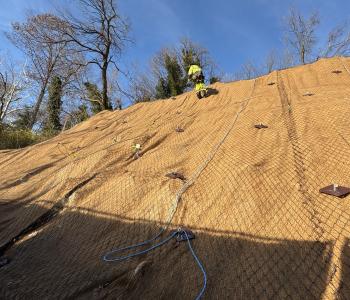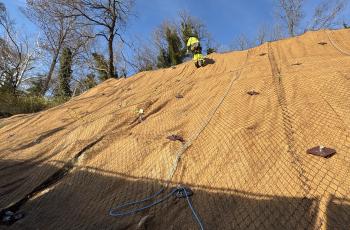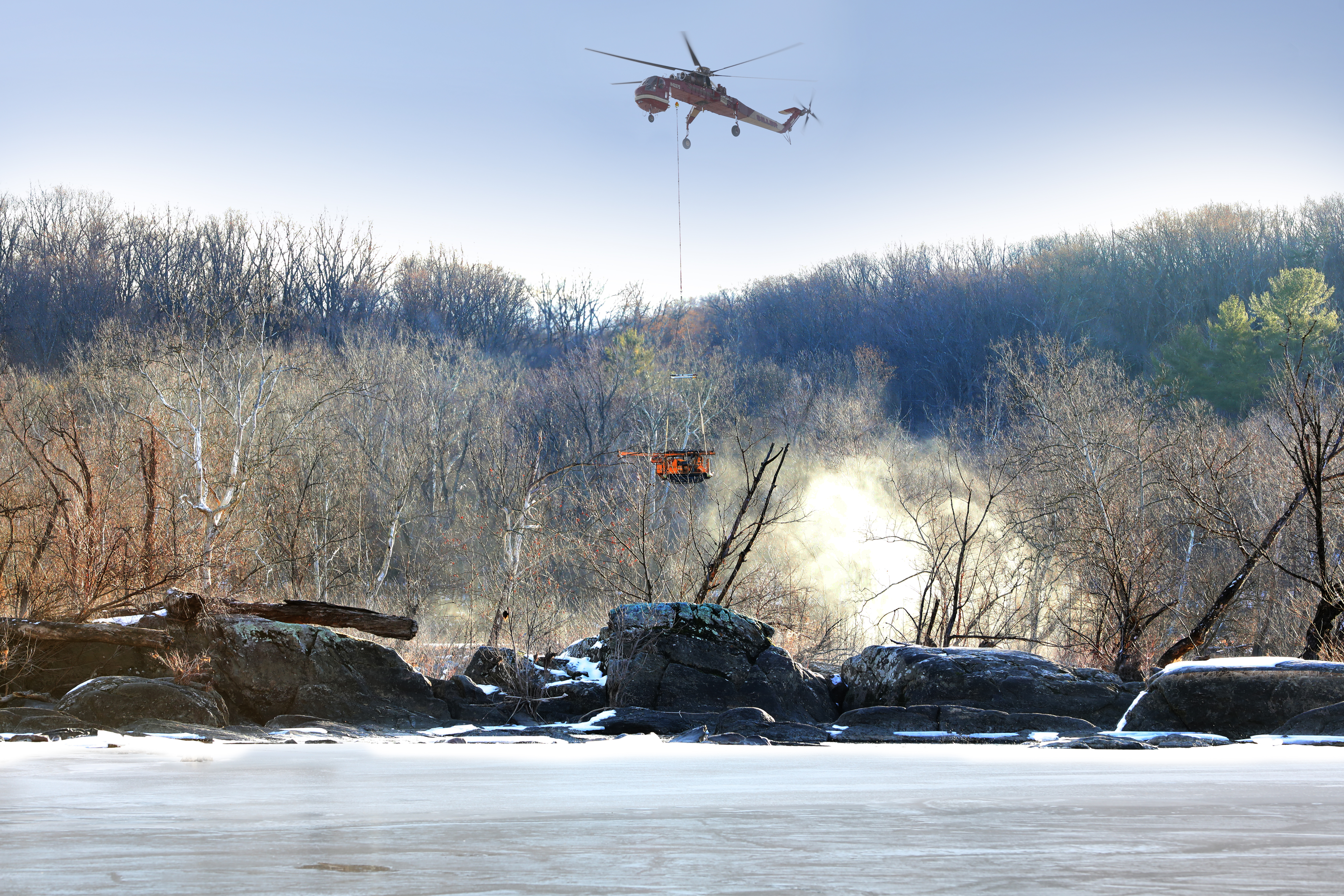Operation Fresh Air removes odors along C&O Canal
Relief is here for the many visitors along the scenic C&O Canal and those who live, work or play anywhere along the 50-mile long Potomac Interceptor sewer. DC Water, the National Park Service, Cabin John Citizens Association, Palisades Citizens Association and other community and environmental groups today cut the ribbon on the first of six odor-scrubbing facilities.
Using technology to scrub the air at these six points along the large-diameter sewer enabled DC Water to remove most of the vents that have for years emitted sewer gases to the open air above. In addition to the District of Columbia facility at Fletchers Boathouse, three Maryland facilities have also been completed. Two more begin construction in Virginia in the coming months.
This solution has been many years in the making, said David Lake, DC Water Board member and Montgomery County Department of Environmental Protection Special Assistant. DC Water, the National Park Service and community groups may have come to the table from different viewpoints, but worked together for the success we celebrate today.
General Manager George S. Hawkins added, DC Water studied the problem, analyzed potential solutions and set about building these facilities. It took many years and dozens of permits, but in the end, we have a series of buildings that blend with the environment, serve to scrub the odors and provide public restrooms for those enjoying the parks.
National Park Service Superintendent Kevin Brandt said, The C&O Canal is a regional treasure that attracts hundreds of visitors a day. Restoring fresh air gives visitors a natural, refreshing outdoor experience. We thank everyone who had a hand in this project.
The ribbon cutting was held at the Fletchers Boathouse building on the C&O Canal. The buildings will control odors and preserve the sewer line from corrosive sewer gases. Most of the vents from the sewer are being removed, but the remaining few vents are necessary to create the vacuum effect that keeps the sewage flowing in this gravity-fed sewer. The total construction cost of the six facilities is approximately $19 million.
The Potomac Interceptor (PI) sewer was constructed in the 1960s by the Federal government to connect Washington Dulles International Airport and several suburban jurisdictions to the Blue Plains Advanced Wastewater Treatment Plant. After, complaints surfaced about the odor coming through the vents, especially along the picturesque C&O Canal, a favorite destination for outdoor enthusiasts.
More information about the project can be found at: http://www.dcwater.com/workzones/projects/potomac_interceptor.cfm







